Monday, November 1, 2010
Hamann SLR Volcano Yellow Edition reviews

You are probably familiar with Hamann Volcano SLR, an ostentatious body kit for the McLaren Mercedes which was released about a year ago. First model was wearing a white paint with naked black carbon parts on bonnet, fenders and the boot. Then some months ago during the 2009 IAA, the tuner released a red edition with the same characteristics and now they are introducing the yellow version of this car! Technically all models are the same, Hamann has just changes the paintjob and released it as a new edition!

The Volcano’s appearance might not appeal to anyone, specially fans of the original SLR, but as far as performance goes this car is a marvel. The standard V8 engine of the SLR is modified with a newly programmed control unit, especially developed high performance exhaust manifolds and an amended belt pulley combination for the serial compressors, and the result of this changes is a massive 700 hp and 830 nm of torque.
Therefore the Volcano beats the original car and the factory-tuned 722 model in top speed. It is also faster in 0-60 acceleration as it only takes 3.6 seconds.
Just like the exterior, the cabin too features a yellow and black theme with leather and alcantara upholstery with hand-stitches and yellow carbon fiber decorations




BMW M3 Concept Car pictures

Spotted crisscrossing Death Valley, California, in 120-degree heat, the M3 prototypes in our exclusive spy video have ditched their heavy camouflage in favor of a few well-placed pieces of tape. Up front, you can now clearly see the more aggressive airdam and power dome hood. We’re pretty sure the M3’s trademark quarter-panel vents are hiding under the taped-on covers, too. Bulging fender flares are another M3 specialty, along with the set of quad pipes out back.
Although current M3s use a similar exhaust setup, it’s partly for show given the six-cylinder engine. That won’t be the case for the next-generation M3, as it’s expected to use a small-displacement V8 for the first time. And given the RS4’s healthy 420-horsepower V8, you can bet the M3 will have at least 400 horses of its own, if not more, to stay competitive. We have yet to confirm whether BMW’s SMG transmission will be the sole gearbox, but after the customer demand for a true manual in the M5 sedan we wouldn’t be surprised to see the M3 give you the choice right out of the gate.
Concept study of a BMW M3 by BMW M GmbH, dimensions and fundamental form based on BMW 3 Series Coupé, exclusive new engineering of almost every body element, purpose-built for individualistic form and maximum sporting potential.
At the core of this concept study is an M3-typical V8 engine tuned to the high revving M concept.
Front design conveying a high performance sports car, functional execution of the front apron and engine compartment lid, a robust Powerdome and large air intakes that express the vehicle’s superior drive power, particularly voluminous air intakes for ample air supply to the engine compartment through the elimination of fog lamps, typical of M, and a front apron in a pronounced forward position that symbolises the car’s motoring spirit.
Sharply defined wheel arches, gill-shaped openings in the front side walls with an elaborate three-dimensional design typical of M cars, and chrome brackets with integrated direction indicators.Characteristic M-brand side skirts providing the side view with an energy-laden accent, visual emphasis of the rear-wheel drive and car’s wide track, 19-inch light alloy rims with the characteristic Y-spoke design, exclusive exterior mirrors with an aerodynamically optimised design.

Rear design with horizontal lines accentuating the car’s wide track, pronounced wheel orientation as a symbol of its powerful stance, rear diffuser that mirrors design elements of the front apron, balanced proportions underlining the BMW M3’s supremacy, M-typical double tailpipes arranged toward the centre of the vehicle.
Intelligent lightweight construction that directly influences the vehicle’s agility and dynamic performance, aluminium engine compartment lid. Side walls made of synthetic material and CFRP roof that optimise weight distribution and centre of gravity, visible CFRP roof construction as an additional design element, emphasis of flat silhouette and high tech character of the vehicle.
Its very name is a symbol for unique performance on the racetrack and in everyday traffic. For two decades, BMW M3 has embodied the athletic heart of the brand in its most fundamental and succinct form. Its dominating role in motor sports and the ultimate driving experience it affords the driver on the road are inseparably intertwined. The qualities on which this synthesis is founded have given the BMW M3 the exceptional status it enjoys the world over.
At BMW M GmbH, engineers have persisted in continuing this success story with the presentation of the new BMW M3 Concept Car. The concept study being presented to the public for the first time at the 77th International Motor Show in Geneva (8th to 18th of March, 2007) gives a first impression of what a future BMW M3 might look like.
The basic form for the BMW M3 Concept Car is a derivative of the new BMW 3 Series Coupé. The few components adopted directly from the series model are the headlamps and taillamps and, as the only body elements, the two doors and the luggage compartment lid. In all other respects, the BMW M3 Concept Car, which is being presented in the Chrome Shadow finish characteristic of BMW M GmbH concept studies, is obviously an individualistic and athletic vehicle with technology at the focus of its engineering.
In keeping with tradition, the engineers at BMW M GmbH developed the BMW M3 Concept Car as a fundamentally individualistic vehicle. The level of commitment to this approach is clearly demonstrated by its body. While it is based on the dimensions and the underlying form of the BMW 3 Series Coupé, virtually all body elements have been newly developed and designed from the ground up. Apart from the supporting vehicle structure, only the doors and the luggage compartment lid were taken over from the series model.
All other components were specially engineered for the BMW M3 Concept Car, lending the vehicle exterior unique aesthetics that accentuate its superior power. Unmistakable features that make the BMW M3 Concept Car instantly recognisable are the special trim at the front and rear, the engine compartment lid with its bulging Powerdome and two air intakes, the lateral air slots in the front side walls, the side skirts and the exterior mirrors in a BMW M typical design.
Faithful to the principle of “form follows function” in designing the body for the concept study, designers at BMW M GmbH used elements that not only visually emphasise the increased sportiness of the vehicle, but also serve a technical purpose. Conspicuous at the front are three large air intakes below the cooling grille that supply the engine with additional intake and cooling air. Strong, vertical struts delineate the air intakes and enhance their characteristic form.
The aluminium engine compartment lid exhibits a wide bulging curvature known as the Powerdome. Like the air intakes beside it, the Powerdome suggests the great potential that can be expected of a powerplant in the engine bay of a BMW M3. The M3 Concept Car features a high revving V8 engine that is anticipated for the series car once it goes into production.
The contours of the Powerdome and air intakes are in line with the forward-pointing sweep of the engine compartment lid and harmoniously blend into the overall design of the front, which is longer than that of the BMW 3 Series Coupé. Together with the double kidney grille typical of BMW and the flat headlamp units, they lend the BMW M3 Concept Car a highly dynamic character.
The muscular front wheel arches of the BMW M3 Concept Car symbolise the high level of agility and driving stability achieved by this vehicle.Together with the forged 19-inch light alloy rims in the classic Y-spoke design, they emphasise the vehicle’s wide track, while a glance through the spokes of the rims reveals the compound high performance brakes developed exclusively for M vehicles.
The opening behind the wheel arch on the front side wall, which the designers refer to as gills, has an elaborate three-dimensional form that is split by a discreet chrome bracket containing the direction indicator and the M3 logo.
Two arched surfaces form the pronounced side skirt, creating a purposefully designed contrast between light and shadow. By giving the side wall a lower appearance, the side skirt lends the car a lighter, sportier look from this angle. The incidence of light on the likewise sharply defined rear wing and wheel stresses the dynamic character of this vehicle and visually highlights its rear-wheel drive.
The design of the side skirt corresponds with the shape of the strongly pronounced contour line. The play of light and shadow between the parallel contours of the skirt and contour line brings about a tightness in design that emphasises the individual character of the BMW M3 Concept Car even more strongly.
Exclusive exterior mirrors developed for the BMW M3 Concept Car feature the characteristic black double foot that reminds the viewer of the wings of an aircraft. Even this small detail is in keeping with the principle of “form follows function”. With their horizontal contour line and tapered shape toward the outside, the exterior mirrors not only contribute to the overall impression of the vehicle, but their aerodynamic shape, optimised in a wind tunnel, is advantageous to air resistance values.
The rear of the BMW M3 Concept Car picks up on the design of the car’s front. The side lines gradually sink toward the rear and the wings end in a modelled hollow flute, emphasising the rear-wheel drive and visualising the superior dynamics of this vehicle. From any angle, the rear creates the impression of a pronounced wheel orientation and a muscular stance.
Its proportions lend it confidence and a calm yet powerful impression. A visually discreet spoiler lip on the luggage compartment lid, also called a Gurney flap, optimally channels the air at the rear and additionally reduces lift on the rear axle.
The contours of the diffuser, whose design is subdivided by modelled struts, mirror the shape of the air intakes at the front. The diffuser and the double exhaust tailpipes positioned close to the vehicle’s longitudinal axis appear to pull the rear together at the centre and build up a tension in conjunction with the horizontal lines of the bumper. The tailpipes have a round cross section and are cut off vertically, as is typical for BMW M GmbH engineering.
There is hardly a body element in the BMW M3 Concept Car that exhibits the level of advanced technology as clearly as the roof. It is constructed of carbon fibre reinforced plastic (CFRP). Specialists at the BMW Plant in Landshut, Germany, rely on an exclusive production method in which the structure of the Formula 1 material remains visible and the finely structured surface is only coated with a layer of clear finish.
As a highly visible advanced technology component, the CFRP roof dominates the technically innovative appearance of the BMW M3 Concept Car. Seen from the side, it lets the roof edge appear flatter and thus lowers the perceived body height. Apart from the exclusive appearance, the CFRP roof also offers a real technical advantage: It is considerably lighter than a steel roof. This not only reduces the overall vehicle weight, but by reducing the weight of the highest element in the body, the centre of gravity is lowered as well. Thus, the reduction in weight at this location is particularly beneficial to the agility and dynamic performance of the vehicle.
The CFRP roof is a perfect example of how interlinking technical innovation with an individual design strategy was central to the development of the BMW M3 Concept Car. Following the tradition of the previous three generations of the BMW M3, this concept study represents a high performance sports car interpreted for use in everyday diving, with its every detail being yet another example of the objective pursued by the engineers. The BMW M3 Concept Car is a vision that shows where striving for the ultimate driving experience will take us in the future.
Audi a4 and audi a4 Wallpa[pers
Look at this beautiful Audi A4. Rieger really knows what they’re doing, they put new front lips, side skirt ,rear bumper with diffuser and the best part is the 20″ rims. they also did some mod. to the engine, but really, the focus here is on the looks. It looks stunning.via modtor
 audi a4 performance
audi a4 performance a4 audi performance
a4 audi performance audi performance a4
audi performance a4 audi a4
audi a4 new audi a4
new audi a4 a4 audi
a4 audi audi a4 used
audi a4 used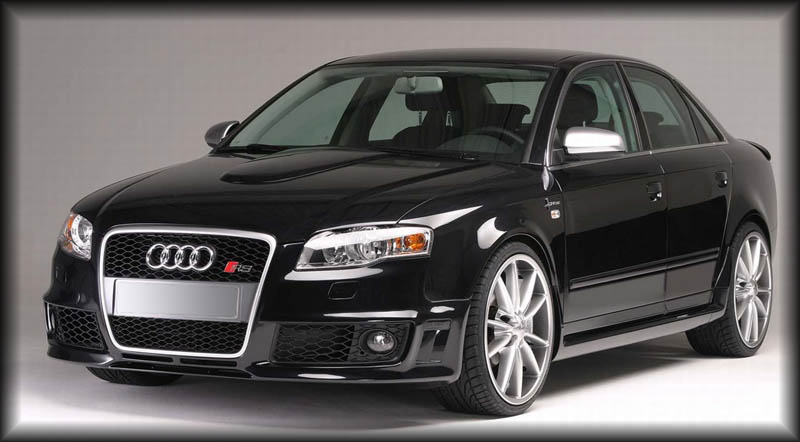 amazing audi a4
amazing audi a4 used audi a4
used audi a4 audi a4 beautifull
audi a4 beautifull Top 10 Fastest Cars pics

No surprises here, the fastest and most powerful production car ever makes the top of the list. I wonder when Koenigsegg will decide to take the #1 position and beef up the CCX.
Koenigsegg CCX

Top Speed: 250 mph
900 Horsepower
As I said above, I expect Koenigsegg to take the number one spot eventually; those crazy Swedes aren’t fooling around.
Saleen S7 Twin-Turbo

Top Speed: 248 mph
750 Horsepower
VCars didn’t specify that it’s an S7 Twin-Turbo, but that’s what they’re talking about. This is one bad-ass car.
McLaren F1

Top Speed: 240.14
620 Horsepower
Can you believe this? The McLaren F1 was made in 1994, 13 years ago, and it’s still one of the fastest cars in the world. This happens to be the first car on this list I would purchase if I had the cash. Then I’d buy the Koenigsegg.
Ferrari Enzo

Top Speed: 217 mph
657 Horsepower
Ferrari’s newest Mega-Car seems to have people crashing it left and right, but the drivers always walk away fine (physically.) With only 399 of these ever made, the value of the car goes up with each crash.
Jaguar XJ220

Top Speed: 217 mph
549 Horsepower
Even older than the McLaren F1, the Jaguar XJ220 has been on this list since 1992. Be sure to check out the Pininfarina version as well.
Pagani Zonda F
Top Speed: 215 mph
602 Horsepower
Yes, I know this is a picture of the Roadster, not the Zonda F. With Pagani’s new Zonda R on the way, the Zonda might be creeping up on this list faster than Bugatti can say “We need bigger turbos.”
Lamborghini Murcielago

Top Speed: 213
633 Horsepower
I think VCars got a little bit confused here. The title suggests they mean the standard Murcielago, but the top speed and pictures tell us they’re talking about the LP640. Let’s clear this up a bit…the horsepower on the LP640 is 640 (hence the name,) and the hp rating on the standard Murcielago is 580.
Porsche Carrera GT

Top Speed: 209 mph
605 Horsepower
Porsche’s fastest, most attractive (and most expensive) car to date comes in at #9.
McLaren Mercedes SLR

Top Speed: 207 mph
Ferrari cool car Gallery
 ferrari image
ferrari image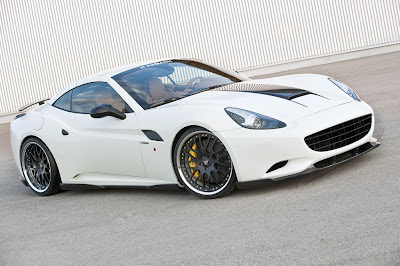 ferrari image
ferrari image ferrari image
ferrari image ferrari image
ferrari image ferrari image
ferrari image ferrari image
ferrari image ferrari image
ferrari image ferrari image
ferrari image ferrari image
ferrari image ferrari image
ferrari image ferrari image
ferrari image ferrari image
ferrari image ferrari image
ferrari image ferrari image
ferrari image ferrari image
ferrari image ferrari image
ferrari image ferrari image
ferrari image ferrari image
ferrari image ferrari image
ferrari image ferrari image
ferrari image ferrari
ferrari ferrari
ferrari ferrari
ferrari ferrari
ferrari ferrari
ferrari ferrari
ferrari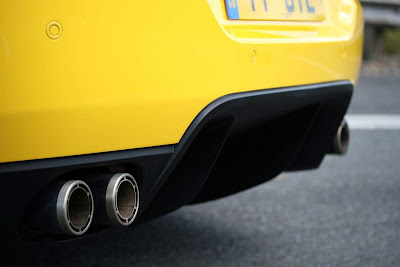 ferrari
ferrari ferrari
ferrari ferrari
ferrari ferrari
ferrari ferrari
ferrari ferrari
ferrari ferrari
ferrari ferrari
ferrari ferrari
ferrari ferrari
ferrari ferrari
ferrari ferrari
ferrari ferrari
ferrari ferrari
ferrari ferrari
ferrari ferrari
ferrari ferrari
ferrari ferrari
ferrari Ferrari cool car
Ferrari cool car Ferrari cool car
Ferrari cool car ferrari cool car
ferrari cool car Ferrari cool car
Ferrari cool car Ferrari cool car
Ferrari cool car Ferrari cool car
Ferrari cool car Ferrari cool car
Ferrari cool car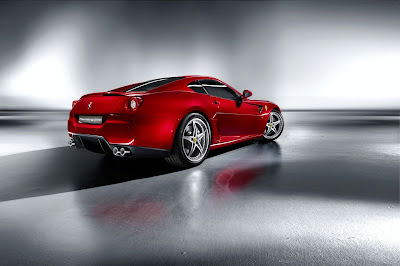 Ferrari cool car
Ferrari cool car Ferrari cool car
Ferrari cool car Ferrari cool car
Ferrari cool car Ferrari cool car
Ferrari cool car Ferrari cool car
Ferrari cool car Ferrari cool car
Ferrari cool car Ferrari cool car
Ferrari cool car
Ferrari cool car
 Ferrari cool car
Ferrari cool car Ferrari cool car
Ferrari cool car Ferrari cool car
Ferrari cool car Ferrari cool car
Ferrari cool car
Ferrari cool car
 Ferrari cool car
Ferrari cool car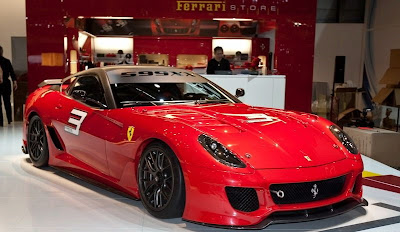 Ferrari cool car
Ferrari cool car Ferrari cool car
Ferrari cool car Ferrari cool car
Ferrari cool car Ferrari cool car
Ferrari cool car Ferrari cool car
Ferrari cool car Ferrari cool car
Ferrari cool car Ferrari cool car
Ferrari cool car Ferrari cool car
Ferrari cool car
 Ferrari cool car
Ferrari cool car














